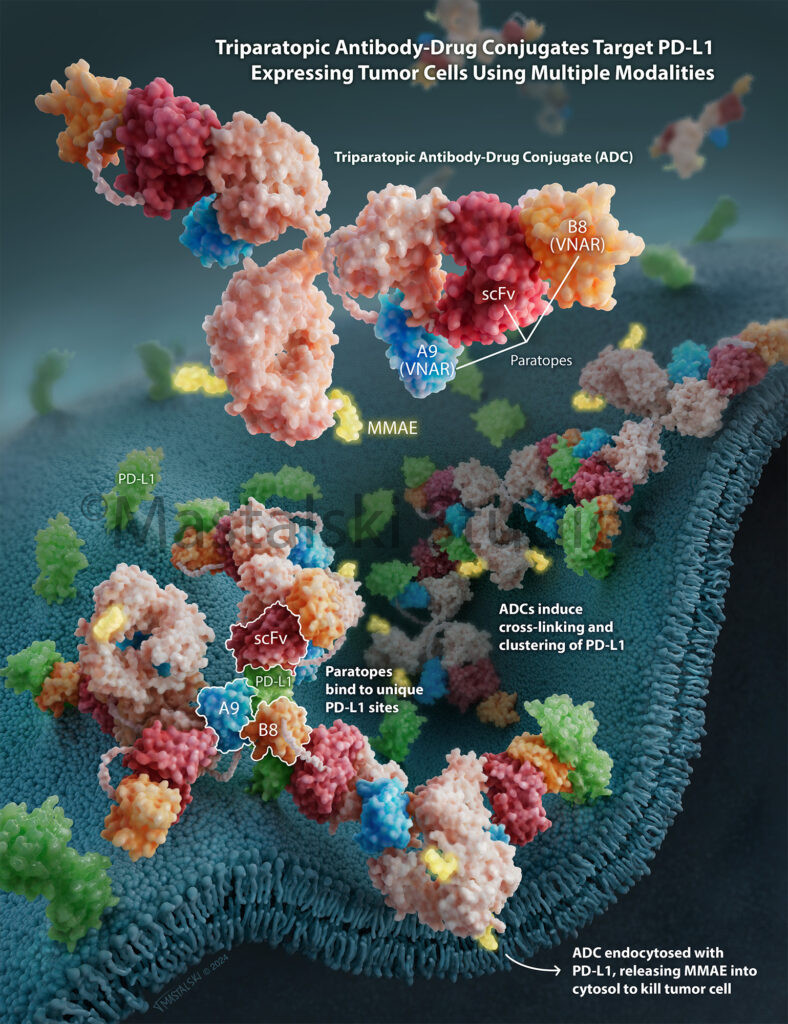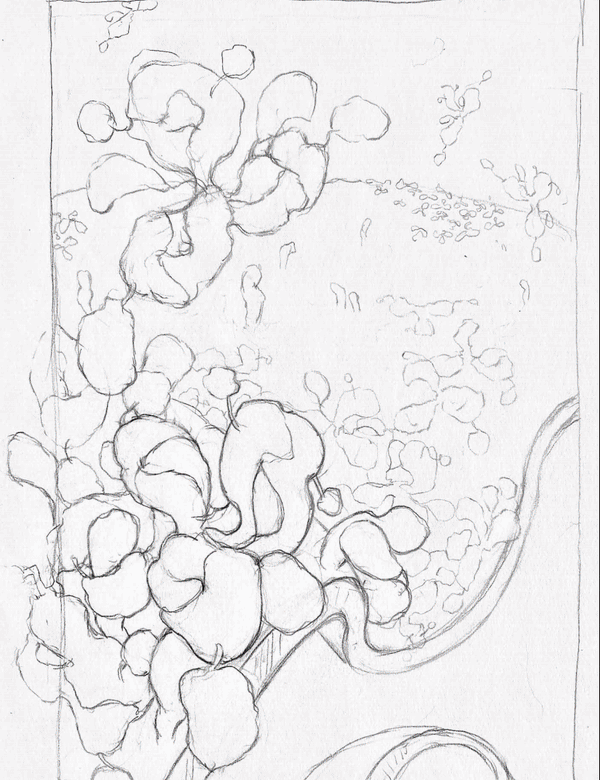
This was a piece created as a poster and possible journal cover for Dr. Jamie Spangler’s (Biomedical Engineering, Johns Hopkins University) new research. Her lab developed a triparatopic antibody that targets PD-L1 on cancerous tumor cells. The three binding sites per arm provide optimal options for crosslinking along the X-Y plane of a tumor cell’s surface between different PD-L1s. This antibody also has a toxic drug, MMAE, chemically conjugated to it that can kill tumor cells. Essentially, this triparatopic antibody-drug conjugate has three complementary anti-cancer mechanisms in a single molecule: blocking PD-L1, down regulating PD-L1 through endocytosis, and killing the tumor cell with MMAE. This piece came together with a combination of PyMOL, Cinema4D, ePMV, and Photoshop. Check out this project’s pipeline below:
Part of my initial research included using PDB and PyMOL to compile a molecular size sheet of all the proteins I would need to depict in my project.
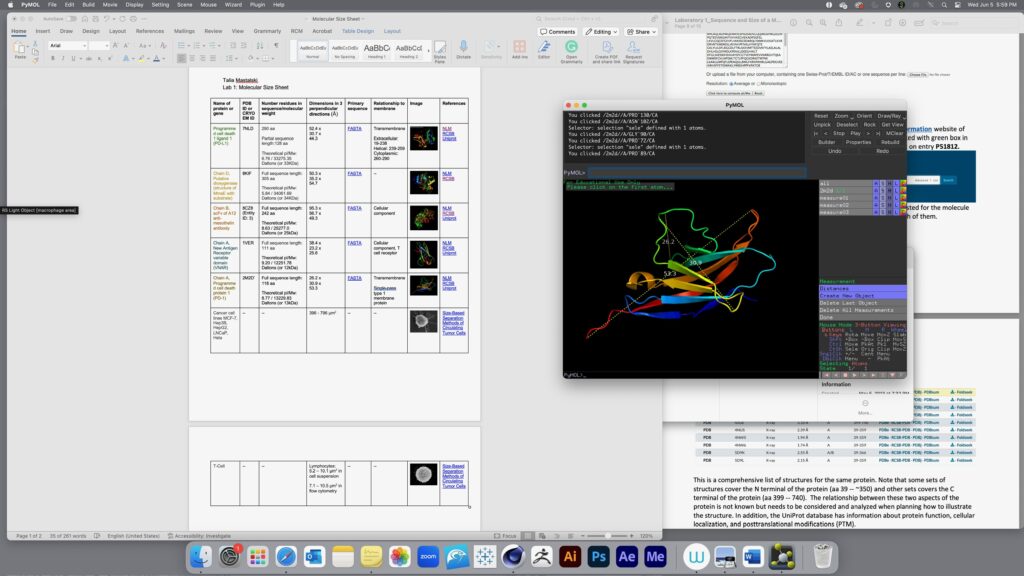
A few pages of sketches to better understand the proteins and the processes involved
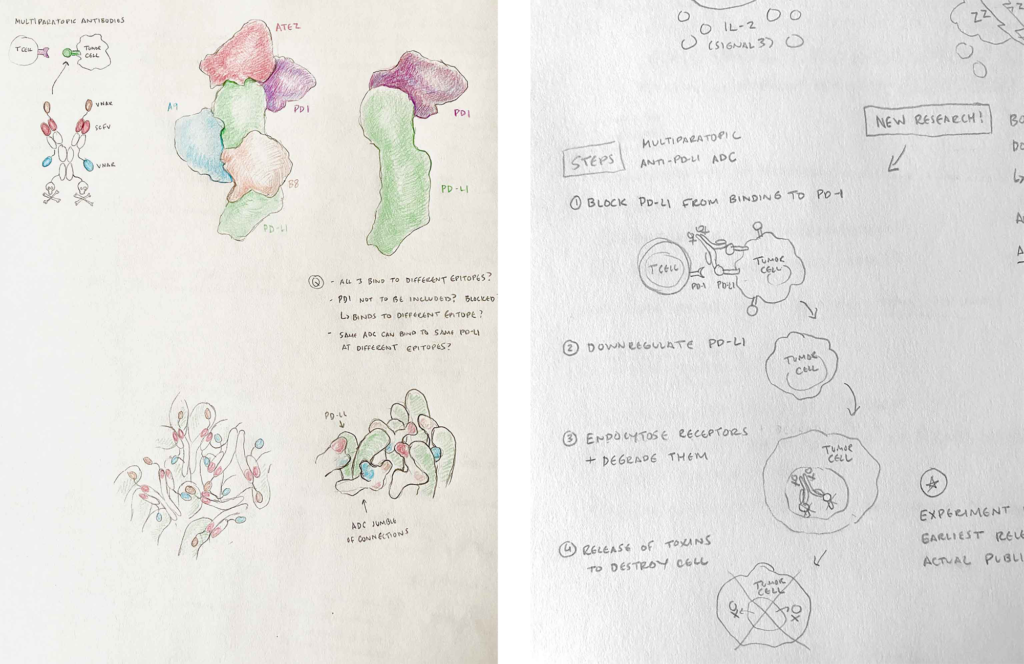
I was tasked with depicting the ADC general structure, the binding at three unique sites, and the internalization and degradation of PD-L1 in a single image. These were some early ideas on how to do that.
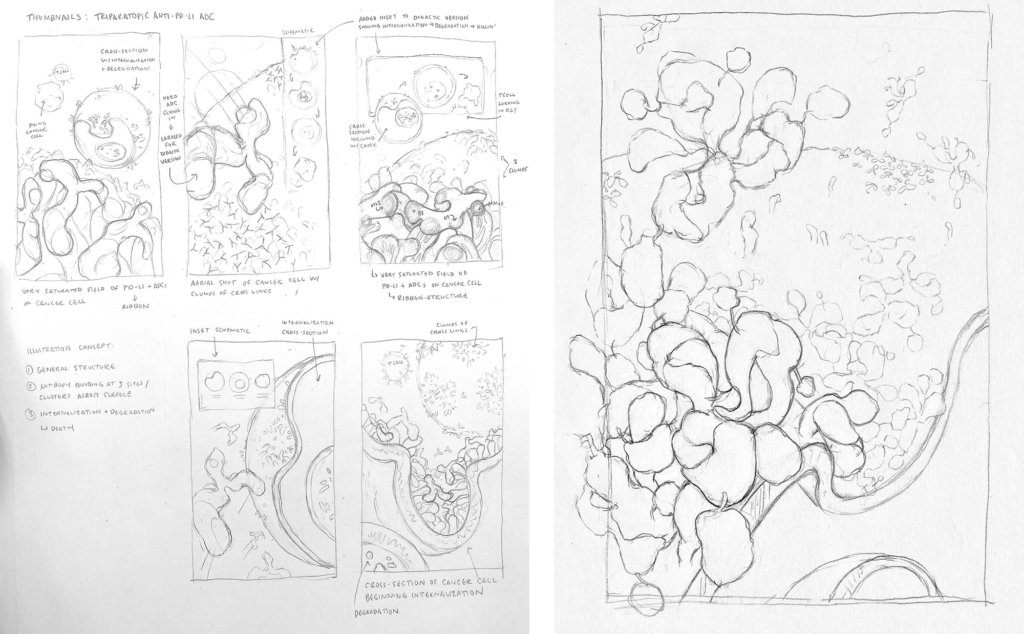
This is when I started to rough out a model using PDB data in PyMOL and take my sketches a step further by incorporating some actual rendering of the paratopes to my favorite layouts.
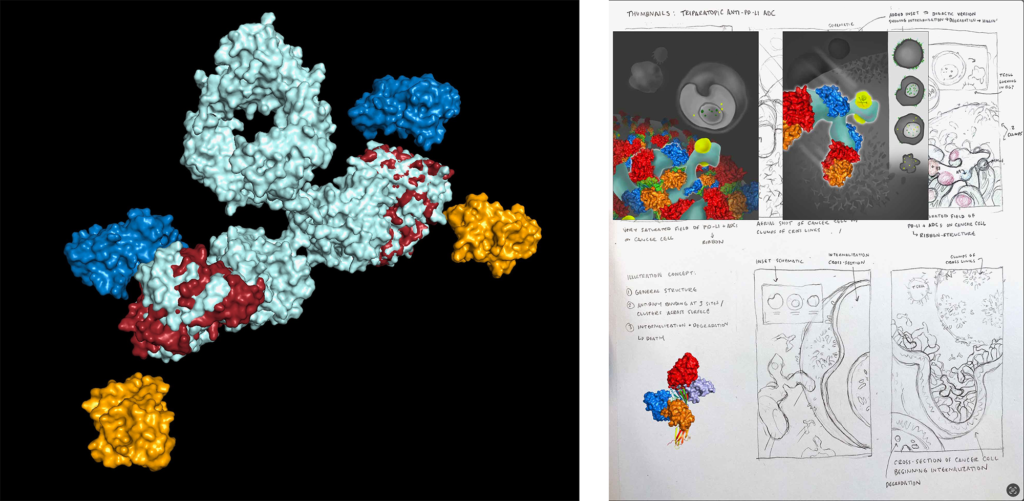
Eventually I settled on a perspective and finalized the sketch in Adobe Photoshop for both a journal cover and didactic poster. I was able to capture the general structure in the hero antibody, the three binding sites in the lower left corner, and the internalization with the endocytosing cell membrane. Like many of my pieces, I ended up flipping the hero around to get a nicer left-to-right and top-to-bottom eye flow.
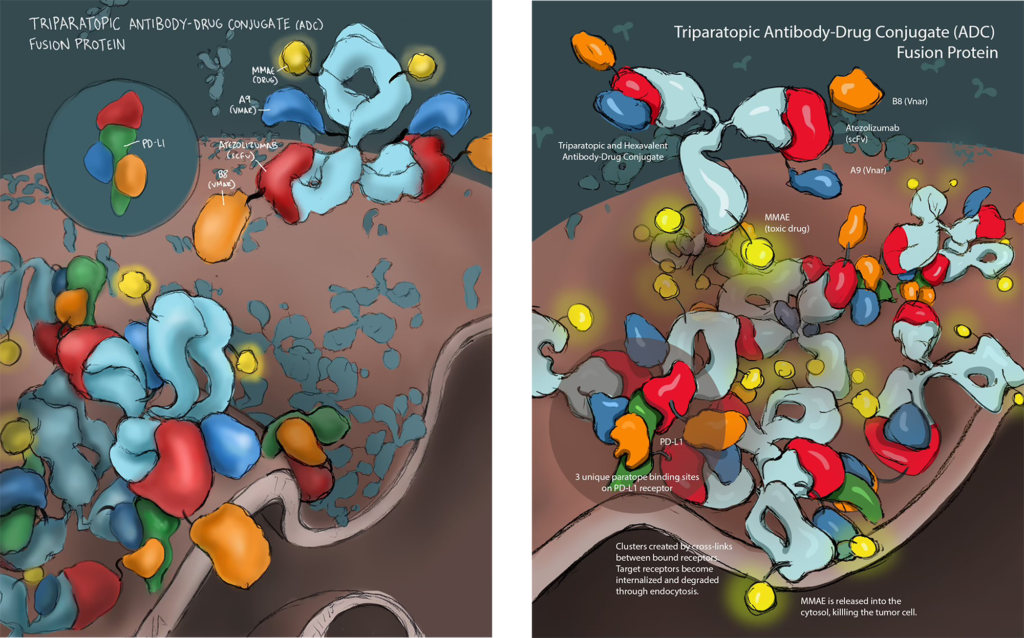
Once my color draft was completed, I recreated the scene in Cinema 4D using the ePMV plugin to get accurate protein renders. It was then down to a lot of tweaking of lighting and positioning to get the best feel and composition. Final edits were done in Photoshop, mostly adding stronger core shadows and ambient occlusion.
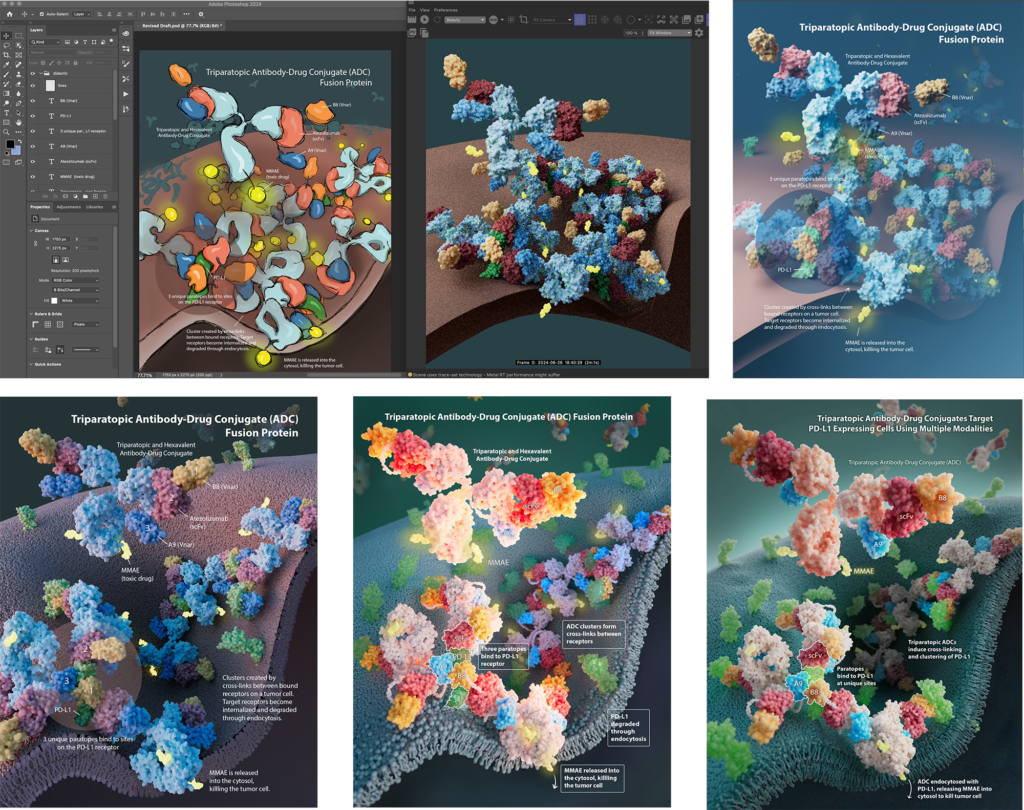
And now the final rendering:
